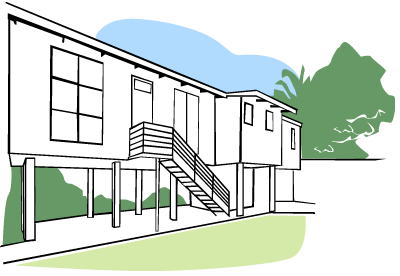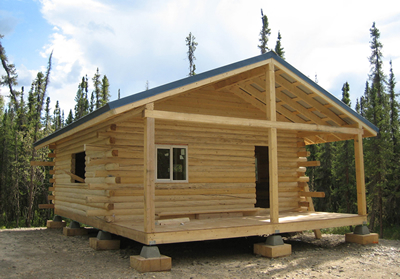
How do you pick the ‘right’ walls and ceilings? It all comes down to making the most sensible and informed decisions regarding your climate, your aesthetic tastes, the amount of maintenance you're willing to commit to, and the standard you can afford. Walls and ceilings that suit you and your needs will make a huge contribution to your comfort and quality of life.
Climate
A successfully built home is one that responds appropriately to its surrounding climate. You can have the most beautifully decorated house with only the best fittings and furnishings, but if it’s difficult to heat and/or cool you’re likely to be miserable and uncomfortable. Make sure you take good advantage of the site’s orientation to make the most out of natural heating and cooling (sun, shade and wind). Consider exploiting the properties of a thermal mass wall if you live in a climate that is warm by day and cool at night, for the purpose of passive heating and cooling.
Another element to think about is the sorts of extreme weather and natural events your home might experience. Some regions are known for regular cyclones, strong winds, bushfires and earthquake. Ensure your walls and ceilings are structurally sound enough to keep you and your belongings safe from these kinds of natural disasters.
Materials
Walls and ceilings can be built from many different materials. Narrow your choices by deciding which materials might suit your climate best, which types of materials you admire and like being around, and of course what your budget will allow you to do. Some examples of building materials for external walls include brick, stone, timber, fibre cement, steel, aluminium, vinyl and concrete, and may even in rare cases include earth or straw bale.
Inside your home, walls might be constructed from brick, plaster or plasterboard and then rendered or clad in tiles or wooden panels. Interior walls in wet rooms and similarly damp areas should be constructed and clad in water resistant materials to make them properly waterproofed. Some materials are considered more environmentally friendly and less toxic than others.

Look and feel
The right sorts of wall and ceiling materials can help you achieve a particular style or theme for your home. Have you always dreamed of living in a rustic log cabin or an imposing stone castle? Perhaps a straw house? Do you want an extravagant, ornately decorated interior or something minimalist or industrial that does away with mouldings and decorations altogether? Your walls and ceilings can make a huge contribution to your home design. Better quality materials will also give your home a feeling of luxury and permanence.
Durability and strength
Consider what role your walls will play when you choose building materials. For example, will the wall be load bearing? Will it be exposed to extreme weather conditions or water? Materials like mud brick are likely to deteriorate relatively rapidly, requiring far more maintenance than a house built from stone, for example.
Maintenance
Some materials require more maintenance than others. As previously mentioned, walls made from mud bricks can deteriorate fairly rapidly and may need replacing after just 30 years. They may also need to be rendered regularly. Most wall materials will require at least some kind of annual maintenance. Be certain to carry out maintenance carefully so you don’t damage your walls.
Acoustics/noise
Walls and ceilings play a big part in regulating sound inside your home. You might live in a noisy area that needs well insulated exterior walls to keep the inside of your home peaceful. Perhaps your home is separated from another by a party wall or ceiling. Sometimes noise ‘bleeds’ from one dwelling to another, causing disagreements between neighbours. Or perhaps the source of noise comes from inside your home - a budding drummer or saxophonist, for example. Likewise, stopping noise from transferring between rooms in your home is essential if you want to maintain a bit of privacy.
If this is the case, you may be interested in interior wall and ceiling finishes that help to improve the acoustics of a room, while preventing sound from escaping. The home cinema is another type of room that often needs specialised wall and ceiling coverings to improve its acoustics.
Cost and budget
You will probably find that while some wall materials are more expensive than others, these also last longer and give your home a better resale value. The pleasure of living amongst quality materials may well be worth extra money. Similarly, the initial outlay for quality insulation might be high, but will save you money in the long run with the resulting drop in your energy bills. Using recycled, reclaimed and repurposed materials can help cut down on building costs.
Building code restrictions
There are many regulations about what sorts of houses you can build and where. Your local council, for example, will require you to fit a minimum amount of insulation in walls and ceilings, while other neighbourhoods only allow their residents to choose a from a short list of colours when painting exterior walls. Homes built in regions which regularly experience cyclones or are at high bushfire risk will need to follow rules about wall bracing, fittings and external wall materials. Consult your council about building code restrictions in your local area.
Height
There are restrictions which apply to both minimum and maximum wall heights. Your builder should be aware of these, but if you are unsure, check with your local council.





